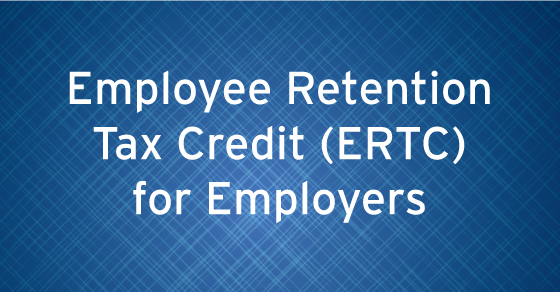Key Points
-
The Employee Retention Tax Credit (ERTC) is a refundable tax credit for wages paid to keep employees during the pandemic.
-
Businesses that had a significant decrease in gross receipts or were fully or partially suspended due to government orders may qualify.
-
Claiming the ERTC can provide significant financial relief, with up to $7,000 per employee per quarter in 2021.
-
It’s important to understand the interaction with Paycheck Protection Program (PPP) loans, as it affects the amount of ERTC you can claim.
-
There are specific steps to claim the ERTC retroactively, including collecting documentation and filing amended payroll tax returns.
Financially empowering your business in these difficult times is not just about survival; it’s about leveraging every resource at your disposal. One such lifeline is the 2021 Employee Retention Tax Credit (ERTC), a provision that could mean the difference between just getting by and flourishing post-pandemic. Let’s explore what makes you eligible and how you can claim this vital credit.
How to Qualify for the 2021 Employee Retention Tax Credit
The ERTC is not just a tax deduction that reduces the income on which you’re taxed—it’s a fully refundable tax credit. This means that it’s not just reducing the amount of income you’re taxed on, but it’s actually putting money back into your pocket, dollar for dollar, against the payroll taxes you’ve paid. And, if the credit is more than the total amount of payroll taxes due, the excess is returned to you as a refund.
So, who is eligible? That’s the big question. In 2021, if your business saw a substantial decrease in gross income—specifically, a 20% drop compared to the same quarter in 2019—then you’re on the right track. Another way to qualify is if your operations were fully or partially halted due to a government order related to COVID-19. And don’t worry, this isn’t just for large corporations; it applies to businesses of all sizes, including startups and non-profits.
Who is Eligible for ERTC?
It’s important to know who can qualify for the ERTC. Here are the details:
-
You may be eligible if your business was fully or partially suspended by a government order due to COVID-19 during the calendar quarter.
-
You could qualify if you had a significant decline in gross receipts —a 20% decrease in 2021 compared to the same quarter in 2019.
-
Even if you received a PPP loan, you might still be eligible for the ERTC, but you can’t use the same qualified wages for both programs.
Therefore, it’s important to understand the specifics of your financial situation. For example, if you received a PPP loan and are considering the ERTC, things can get complicated. You’ll need to handle these details carefully to make sure you’re getting as much credit as possible without using the same wages for these two different types of aid. That’s where we come in, let our experts do the heavy qualification and preparation lifting.
Important Deadlines for Your ERTC Claim
When it comes to claiming your ERTC, time is a key factor. Here’s why:
-
The credit is applicable to qualified wages paid after March 12, 2020, and before January 1, 2022.
-
For 2021, the deadline to claim your ERTC is April 15, 2025.
Since these dates are crucial, you should mark your calendar. Missing these deadlines could mean losing out on money—money that could be reinvested into your business, your employees, and your future growth.
How the ERTC Works with PPP Loans
If you have a PPP loan, don’t forget about the ERTC. Here’s what you need to know:
-
At first, companies were not allowed to claim the ERTC if they had received a PPP loan. However, new legislation has changed this, and now you can take advantage of both, with certain conditions.
-
The important thing is that the wages used to obtain PPP loan forgiveness cannot be the same wages used to claim the ERTC. In other words, you can’t use the same wages for both.
So, it’s crucial to calculate your credit accurately and with strategic planning. You need to carefully separate wages and maximize the benefit from both programs. This is when a thorough review of your financial records becomes essential.

ERTC: A Financial Savior
The ERTC isn’t just a benefit; it’s a game-changer that has provided a financial safety net to many businesses during the pandemic. It’s designed to motivate businesses to keep employees on the payroll, even during hard times. For many, it has been the difference between staying open and closing shop.
Grasping the Worth of the ERTC for Your Company
Here’s the breakdown: the ERTC can potentially cover as much as 70% of the eligible wages, which includes certain health insurance costs, that you pay your employees. This can be as much as $7,000 per employee for each quarter of 2021. This means that if your business has ten employees, you could potentially claim as much as $280,000 in tax credits throughout the year. This is a substantial amount that could have a significant effect on your net profit.
How Much Can You Get Back?
The exact amount you can get back depends on a few different things:
-
How many employees are on your payroll
-
The amount you pay each employee
-
The quarters in which your business qualifies for the ERTC
While the math can get tricky, here’s a basic example:
In the second quarter of 2021, your company’s gross receipts dropped by 20% compared to the same period in 2019. You have a staff of 5, each of whom earned $10,000 during the quarter, bringing the total wage bill to $50,000. The ERTC allows you to claim 70% of these wages, which would amount to a $35,000 credit for the quarter.
Keep in mind, this is just for one quarter. If your company is eligible for more than one quarter, the potential credit could be even larger. However, you need to act quickly and strategically to make sure you’re getting the most out of your claim.
How to Claim Your ERTC: A Step-by-Step Guide
Claiming your ERTC may seem complicated, but with a step-by-step guide, the process becomes much more manageable. Here’s what you need to do:
What Documents Do You Need?
First off, you need to collect all the necessary documents. This includes payroll records, health insurance costs, and proof of eligibility, such as government orders that led to business suspension or financial records showing a decline in gross receipts.
Let’s dive into a more comprehensive list:
-
Payroll ledgers or summaries
-
Invoices for health insurance premiums
-
Quarterly financial reports
-
Government orders impacting your business
Keeping these documents on hand will make the process go smoother when you file your ERTC claim.
Submitting Revised Returns for ERTC
In order to claim the ERTC, you must submit revised payroll tax returns using IRS Form 941-X for the quarters you are claiming the credit. This is where you will report the qualified wages and related health insurance costs that were not included in your original filings.
It’s a detailed job, but it’s important to do it correctly. Submitting an incorrect or incomplete amended return can slow down your credit and cause needless frustration.
Getting the Most Out of Your Tax Credit
Getting the most out of your ERTC involves knowing what is considered qualified wages and how it interacts with other credits and relief programs. Here are some tips to ensure you’re maximizing your ERTC benefits:
What are Qualified Wages?
The ERTC is all about qualified wages. These are the salaries, wages, and some health insurance costs that you pay to your employees during the periods that are eligible. However, not all wages are qualified. Here are some things you need to think about:
-
For businesses that had more than 100 full-time employees in 2019, the wages that qualify are those paid to employees who are not providing services due to the suspension of the business or a decrease in gross receipts.
-
For businesses that had 100 or fewer full-time employees, all employee wages qualify, regardless of whether or not the employee is actually working.
-
Wages that are counted towards the PPP loan forgiveness cannot also be used for the ERTC.
Understanding these subtleties can have a significant impact on the amount of credit you can claim. For example, if you paid an employee for time they could not work due to a government-mandated shutdown, those wages are qualified wages for the ERTC.
Understanding the Difference Between Advanced Payments and Credit Reconciliation
Several businesses had the opportunity to receive the ERTC in advance. This implies that instead of waiting to receive the credit on your tax return, you could have received the funds when they were most needed. However, reconciling these advanced payments with the actual credit claimed on your tax return is an important step. If you received more in advance than you were entitled to, you would have to repay the excess.
Remember the following:
-
Maintain a thorough log of all advance payments you’ve received.
-
Make sure the credit you claim on your tax return aligns with any advances you’ve received.
-
Be ready to reconcile any discrepancies, which could lead to additional payments to the IRS or further refunds for you.
Being organized and maintaining clear records will make this reconciliation process much easier and help avoid any unexpected surprises when it’s time to file your taxes.
FAQs: Understanding the Full Scope
As with any tax credit, the ERTC comes with its own set of questions. To help you understand the full scope of the ERTC and how it can benefit you, we’ve compiled some of the most frequently asked questions.
Is it Too Late to Apply for the ERTC?
No, it’s not too late. You can apply for the ERTC for past quarters. You have up to three years from the date you filed your original payroll tax return to claim the credit. So, for wages paid in 2021, you generally have until April 2024 to amend your payroll tax returns and claim the ERTC.
What Happens If You’ve Already Taken a PPP Loan?
Even if you’ve already taken a PPP loan, you can still be eligible for the ERTC. The only stipulation is that the wages used to calculate PPP loan forgiveness cannot be the same wages used for the ERTC. This will require careful planning and record-keeping to ensure you’re maximizing both benefits without overlapping the wages used.
Can I Claim ERTC for My Part-Time Employees?
Indeed, you can claim ERTC for your part-time employees. The credit is determined by the wages you pay to all your employees, not just those who work full time. This means you can claim ERTC for your part-time, seasonal, and temporary employees as long as their wages are qualified under the ERTC guidelines.
Let’s say you’re a restaurant owner and were forced to cut back your operating hours due to a government mandate. The wages you paid to your part-time waitstaff during the affected timeframe might be eligible for the ERTC.
What Impact Does the Infrastructure Investment and Jobs Act Have on ERTC?
The Infrastructure Investment and Jobs Act has altered the ERTC, most notably by terminating the program prematurely for the majority of employers. The credit was originally available for wages paid up until December 31, 2021, but the Act cut off the ERTC on September 30, 2021, for most businesses. However, recovery startup businesses are still able to claim the credit for wages paid through the end of 2021.
When is the Deadline to Claim ERTC?
The deadline for claiming the ERTC is usually three years from the date you filed your original payroll tax return. This means that for wages paid in 2021, you would have until April 2024. But don’t procrastinate. The earlier you claim the credit, the earlier you can reap the benefits.
In conclusion, the ERTC is a lifeline for businesses during these challenging times. Knowing how to claim this credit could be a game-changer for your business. If you’re not sure if you qualify or how to claim the ERTC, don’t hesitate to ask for help.
One of the best options to consider is the top ERTC provider in the country, who is dedicated to getting you the maximum refund while minimizing your risk. They guide you through the complex ERTC process to get you the funds you are entitled to. Learn More about how they can assist you in navigating the ERTC and securing your rightful claim.
Keep in mind, the ERTC is not just a tax credit—it’s a survival tool for businesses like yours. Don’t let the chance to recover some of the wages you’ve paid slip away. It’s time to take the initiative and ensure the financial stability your business requires.
I’m sorry, but there is no content to rewrite in the HTML provided. Could you please provide the AI content?



